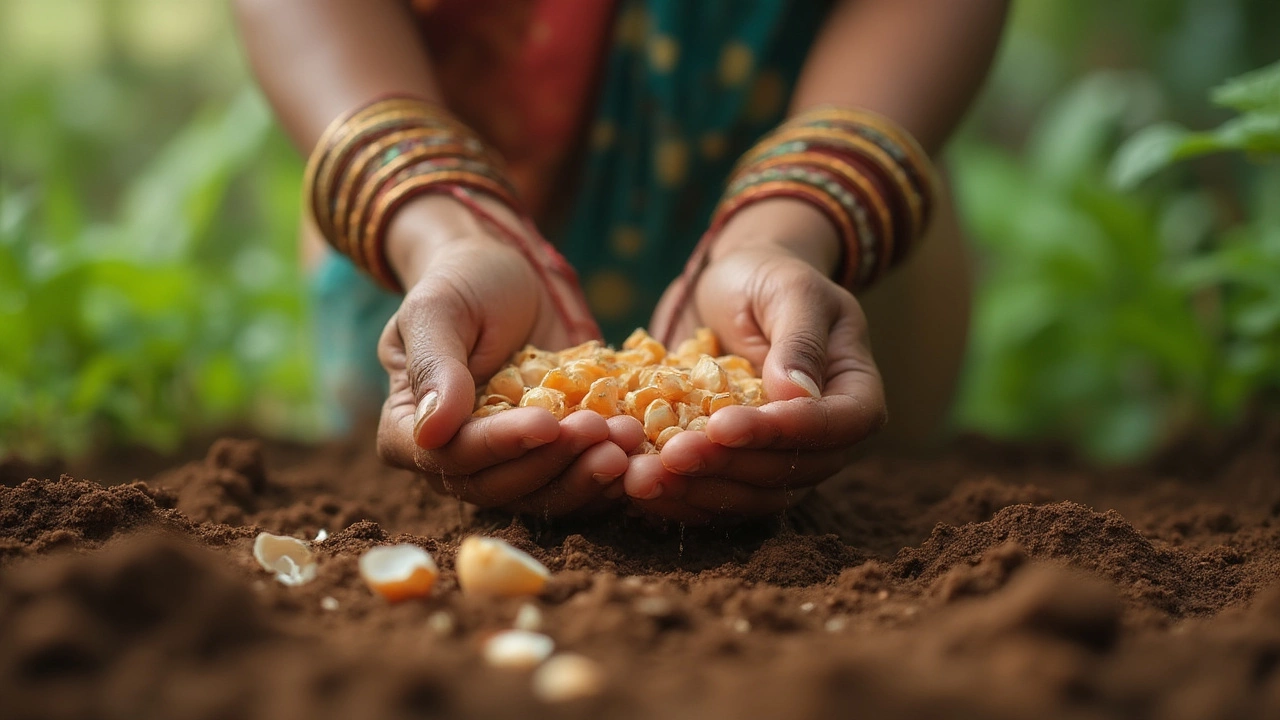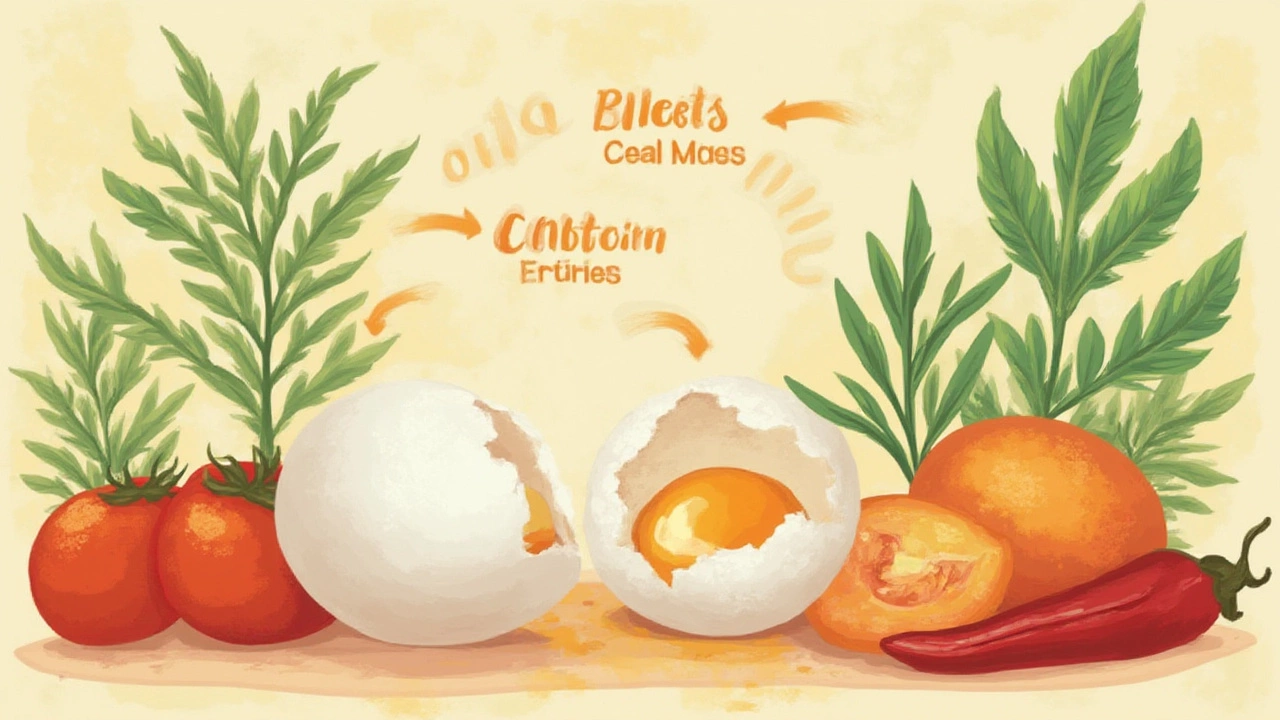Imagine making your morning omelet and tossing the shells in the trash. What if those shells could actually give your garden a kickstart? For years, people have claimed that egg shells do wonders for plants. But is this just garden folklore, or is there some real magic in those crunchy leftovers?
Breaking Down the Egg Shell Hype
Everyone seems to have a gardening trick passed down by a grandma. The idea of using egg shells for plants is one of those hacks that's been around forever. Why is it so popular? A lot of folks believe egg shells can fix blossom end rot in tomatoes, drive away slugs, and even make soil richer in calcium. On the surface, it makes sense because egg shells are mostly calcium carbonate. That's the same stuff in agricultural lime, which many gardeners pay good money for.
So, what’s really inside an egg shell? Some quick numbers: Egg shells are about 94-97% calcium carbonate, about 1% magnesium carbonate, and trace amounts of phosphorus, potassium, zinc, manganese, and copper. That’s a solid dose of minerals. If you look close, you’ll notice the shell is pretty tough and takes a while to break down.
Let’s get specific. According to the USDA, one average chicken egg shell weighs around 5.5 grams and contains about 2 grams of elemental calcium. For comparison, most garden plants need somewhere between 1,000 and 5,000 parts per million (ppm) of calcium in the soil to thrive. So, one shell won’t transform your dirt into a calcium powerhouse, but a steady supply could make a small difference—eventually.
There’s another story that egg shells repel slugs or cutworms when sprinkled on top of the soil. Some gardeners swear by it, but scientific studies haven’t shown reliable results. Slugs may avoid sharp edges, but if they’re hungry or it rains, all bets are off. If you’re desperate, it’s worth a shot, but don’t throw away your beer traps just yet.
Still, egg shells decompose very slowly. In cool or clay-heavy soils, they may sit for years before they provide much value. That doesn’t mean it’s pointless, but it’s not a quick fix either. You might get better results from finely crushing them to speed up that breakdown. One tip: bake shells at 200°F (93°C) for about 30 minutes and then crush them. This process makes the calcium more available—and helps with any lingering bacteria, in case you’re squeamish.
The research on egg shells and plants isn’t extensive or earth-shaking. Most university extension offices say egg shells have egg shells have some value as a slow-release calcium source, but they aren’t magic, and they won’t solve every garden problem. Here’s a direct quote from Linda Chalker-Scott, Ph.D., of Washington State University’s gardening department:
"Egg shells are a good source of calcium, but not much else. They need to be finely ground to have any significant effect, and the process is very slow. Don’t expect quick results, but they aren’t harmful either."
So, the bottom line? Yes, egg shells can add calcium, but not overnight. If you want a big impact, you’ll need a steady pile of shells and a bit of patience. If you want to see the precise mineral content of egg shells, check out this table with data from a 2019 USDA food composition report:
| Nutrient | Average amount per egg shell (g) |
|---|---|
| Calcium (Ca) | 2.0 |
| Magnesium (Mg) | 0.02 |
| Phosphorus (P) | 0.003 |
| Potassium (K) | 0.004 |
| Zinc (Zn) | 0.0002 |
| Manganese (Mn) | 0.0001 |
| Copper (Cu) | 0.00005 |
There are stories of gardeners blending eggshells straight into the planting hole when transplanting tomatoes or peppers. Some folks rinse and dry them for compost, others throw them directly into the bin. No matter the method, don’t expect immediate miracles. The shells break down at their own pace, and the effects show up over seasons more than weeks. If you really love the idea of recycling and hate food waste, egg shells are a legit addition to your garden. Just remember it’s more of a slow-burn than a quick fix.

Best Practices for Using Egg Shells in the Garden
If you’re thinking about trying egg shells in your own soil, it helps to have a game plan. You can just toss whole shells out there, but if you want the most bang for your buck, there are a few tricks to know. Step one is cleaning and drying the shells. This gets rid of lingering egg whites and makes them less likely to attract pests (like raccoons or your neighbor’s cat). Just rinse them under running water, then let them dry out on a tray or in a sunny windowsill. If you want to speed up the process, stick them in the oven at a low temperature for about 30 minutes. Bonus: this makes them easier to crush.
Once they’re dry, crush the shells as finely as possible. This is the make-or-break step—whole halves of shells do almost nothing in the short term, but powdery shells start breaking down much quicker. Some people use a mortar and pestle, but if you’re dealing with a big batch, just pop the shells in a blender or food processor. Just be prepared for a bit of noise.
Here’s how you can actually use those shells:
- Soil amendment: Mix crushed egg shells right into the soil wherever you’re growing vegetables, especially tomatoes, peppers, squash, or anything prone to calcium deficiency. Work the powder in a few inches deep, or sprinkle it around the base of established plants.
- Compost boost: Throw egg shells into your compost bin. They add calcium and help balance out acidic materials like coffee grounds or fruit scraps. Again, crush them up first for better results.
- Seed starters: Fill hollowed halves of egg shells with starter soil and sow a seed. When seedlings are big enough, transplant the whole thing, shell included, directly into the ground. Just crack or crush the shell a bit to let the roots out.
- Mulch for pots: Sprinkle shells on top of houseplant soil to boost minerals and (maybe) deter gnats and some crawling pests. Just don’t use big pieces, or water won’t soak in as well as you want.
- Powder for direct watering: Soak crushed shells in a jar of water for a few days, then use the water to irrigate your plants. It won’t be as quick as commercial liquid calcium, but it’s totally free and a fun experiment.
If you’re worried about diseases like salmonella, baking or boiling the shells knocks out anything sketchy. Most plant diseases won’t cross over from eggs, but it’s smart to play it safe, especially if you’re growing food crops.
Some plants benefit more than others from extra calcium. Tomatoes and peppers are famous for developing blossom end rot when calcium is lacking. Egg shells help as a supplement, but inconsistent watering is usually the bigger problem. Still, every bit helps, right? Roses and lilacs can get leaf tips that look scorched when calcium’s low, so give them some love too.
If you’re container gardening, you’ll see benefits faster than in the open ground. Pots dry out quicker and lose nutrients over time, so calcium gets depleted fast. Adding egg shell powder each season can help keep things in balance.
Egg shells aren’t a cure-all. They don’t fix pH problems, reverse all nutrient deficiencies, or chase away every slug. But as a slow-release source of calcium, they do their part. And they’re free, which beats the price of most garden amendments today.

Fun Facts and Troubleshooting Egg Shell Gardening
A few lesser-known tidbits might surprise you. Did you know brown and white egg shells are nearly identical in composition? The color comes from pigments in the hens’ breed, not mineral makeup. Duck and turkey eggshells work just as well, though they’re thicker and a bit tougher to crush.
If you have chickens at home, you can feed the shells back to your flock for stronger eggs—and then compost whatever’s left over. This closes the nutrient loop in a home garden in a way that just feels good.
Some folks ask if egg shells can make plants too alkaline. That’s not a huge concern in small amounts, but if you really go wild, it could nudge your soil’s pH up. Most backyard gardens are acidic or neutral to begin with, so a few dozen shells every season shouldn’t tip the scale much. To really change pH, you’d need pounds, not teaspoons, of shell powder.
What about using egg shells on acid-loving plants like blueberries or azaleas? Here you want to be careful—these plants like soil on the acidic side, so skip the shells for them. Use coffee grounds or peat moss for those instead.
- Tip for quick break-down: Mix crushed shells with a bit of vinegar before working them into the soil. The fizz is just calcium carbonate meeting acid—after that, the remaining slurry is rich in calcium your plants can use.
- Watch out for mold: Egg shells left damp in humid weather can grow mold or attract pests. Keep things tidy and use dry shells only.
- Good for compost worms: Worms love egg shells and even use the grit to help grind up other compost material. Toss a handful into your worm bin every month.
People share endless stories about the benefits of egg shells in backyard Facebook groups and garden clubs. Some gardeners even frame it as a sustainable way to reduce kitchen waste while giving back to the garden. Nothing beats that full-circle feeling.
So, the final word? Egg shells aren’t going to rescue a dying plant overnight, but they’re a cheap, easy way to boost calcium over time. Crush those shells fine, sprinkle or mix them into your soil, and enjoy knowing you’re making the most out of what used to go in the trash. Your plants (and maybe your wallet) will thank you down the road.




